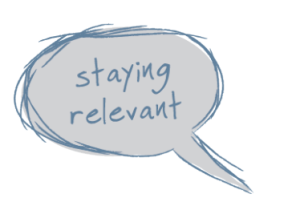 “The world has never been as complex, dynamic and uncertain as it is today and the pace of change will only increase.”
“The world has never been as complex, dynamic and uncertain as it is today and the pace of change will only increase.”We hear this consistently, our continual problem is trying to make sense of it.
Building Your Innovation Intelligence
Bringing my thinking and solutions to your problems
 “The world has never been as complex, dynamic and uncertain as it is today and the pace of change will only increase.”
“The world has never been as complex, dynamic and uncertain as it is today and the pace of change will only increase.” Our whole understanding of innovation is changing; there are numerous shifts occurring.
Our whole understanding of innovation is changing; there are numerous shifts occurring.
We are opening up our thinking about where and with whom, to collaborate.
We are evaluating and changing our existing focus from closed (internal orientation) into one that is having a far more open stance. We are searching for more collaborative innovation (external orientation) combining external partners into more ‘collective thinking’.
The shifts taking place are offering us the promise of “extra acceleration” that is needed to improve our innovation performances from concept to market delivery. Or, we hope it is!
Collaborative innovation is also leading us to higher chances of achieving greater impact and success, as nearly all novel ideas lay are mostly outside the organization’s domain of understanding. We need to always bring the knowledge inside and build from it.
As we increasingly include the customer and their more exacting needs within our understanding, these multiple collaborations and dialogues are building this better internal understanding to align our innovation with specific opportunities, relevancy and needs.
Continue reading “Opening up our innovation to stay relevant”
T hese are simply some opening thoughts. For a long time, I have become increasingly dissatisfied with the way we have managed or even depicted the innovation value chain.
hese are simply some opening thoughts. For a long time, I have become increasingly dissatisfied with the way we have managed or even depicted the innovation value chain.
I really think we should bring it up to date.
There has been such a considerable change taking place in many of the parts of innovation management, I think we need to replace the existing fuzzy front end, the pipeline and portfolio stage followed by execution with something far more reflective of how we think and what we deploy today as tools, methods and frameworks to deliver innovation.
The ‘old approach’ just does not calibrate anymore for me with where we have been heading, or more importantly in how we are attempting to manage innovation within our organizations.
So I feel we need to determine a new innovation value chain and would like to make the first attempt
Continue reading “The New Innovation Value Chain Perhaps?”
 Anyone who has felt the ‘full force of the wind’ will know the feeling of how hard it is to keep on your feet, to stay determined to stay upright and true, to hold the course, whatever happens.
Anyone who has felt the ‘full force of the wind’ will know the feeling of how hard it is to keep on your feet, to stay determined to stay upright and true, to hold the course, whatever happens.Constructing a climate for any transformation is hard. Our cultures are deep-rooted; we resist those winds blowing into us “full-on,” well beyond being reasonable or smart enough to avoid them before they confront us. The Chinese proverb below gives us a clear choice: “to build walls or build windmills”
Continue reading “Seeking fresh winds and new directions”

Thinking about ecosystems certainly allows us to go out of our normal scope of internally generating new products.
It opens up a host of possibilities, that can add significantly to a new service design, new capabilities and solving more complex problems.
In opening up to managing within ecosystems, you begin to see your ability to contribute and tackle societal problems within a collaborative system.
You can see new opportunities that can allow you to enter new markets that would have been impossible as an individual organization.
You begin to see the power, scale and strength of having the collective collaborative ability to extend beyond more traditional thinking design. You go beyond the utilization of leveraging existing infrastructure, building on others’ specializations and leveraging through technology powerful new concepts to tackle increasingly complex innovation design.
Continue reading “Innovators – are you thinking about Ecosystems?”
 Change is all around us, it is accelerating not abating. Do you feel you are trapped, encircled and just a little concerned.
Change is all around us, it is accelerating not abating. Do you feel you are trapped, encircled and just a little concerned.
You often hear of volatile trading conditions, a more complex market and situations changing constantly and moving faster than ever. ‘Much’ seems to be closing in on us.
We do know we need to re-equip ourselves for constant disruption; we are really beginning to see a shift from the classic bell curve into more of a shark fin for adopting change.
One that is characterized by sudden, even violent success or an event, some moments of brilliant dominance, followed by a dramatic change in conditions as others have spotted the same opportunity and you hit a rapid decline, the race to the bottom of competition constantly negating one another.
Market are segmenting, the life cycle is shortening or having an even longer tail of dealing with slow decline and constant erosion of any competitive position. The sharks are arriving even earlier and in a greater need to show their dominance.

 There is a growing, perhaps even an overwhelming business case, for transforming the innovation management structure.
There is a growing, perhaps even an overwhelming business case, for transforming the innovation management structure.
The new combination is the new connections through people and things (IoT) that we can achieve a new innovation potential.
We will obtain increasing more powerful insights that have the real potential of being turned into new innovation outcomes, through the connected businesses we are presently needing to build. This can generate new value and business propositions.
Today the virtual world of digital is moving much faster than the physical ‘enacted world,’ of turning insights into actual innovation activities, through the innovation pipeline. Our innovation systems are lagging significantly behind. We need to radically redesign them and bring them up to date, fit for managing innovation in the 21st century.
The whole discovery to final execution, is for most organizations still a very fragmented, often disconnected system. It is highly reliant on manual systems with people often disconnected from the real innovation engagement making decisions on inadequate data or insights.
We are failing to leverage all we have gained from our innovation understanding over the years. We have this ongoing inability to adapt, to connect the innovation system through the use of technology and growing value networks, so as to provide the integration, the dedicated resource and accountability to deliver successful innovation outcomes that our customers require.
Successful outcomes are certainly possible, from a well-designed innovation management system brought up to date, adaptive, flexible and responsive, if we apply the time and effort to conceive and construct it.
Continue reading “Technology leads, innovation exploitation is lagging”
 Erosion is everywhere, it just seems inevitable, we somehow get caught up in the process of time and our organizations seem to ‘freeze’ before our eyes, then simply age.
Erosion is everywhere, it just seems inevitable, we somehow get caught up in the process of time and our organizations seem to ‘freeze’ before our eyes, then simply age.
They become fixed, rigid and locked into their established ways, not adapting to the changes occurring around them. We often give up and leave, moving on to better places and challenges.
We seemingly are reluctant to undergo any transformation, experimentation or adjustment in our organizations until it becomes a matter of survival, then its often far too late.
Then it becomes a mad scramble to transform ourselves, often with damaging consequences of deteriorating performance, battling more competition that are sensing our weakness, never capable of returning to those previous highs.
We simply hate adapting or adjusting, certainly on a constant basis, we resist any form of ‘greater’ transformation – why?
If we can’t adapt to changing times, we simply struggle to survive, that is the growing reality operating in today’s environment. Simply put companies ‘die’ due to their inability to adapt to change and transformation projects fail because the message somehow fails to register and never gets completed to the original objectives.
According to a survey by McKinsey in 2011, 72% of our transformation programs fail to deliver on their original targets. Also one out of every two of our top organizations in the Fortune 500 will be gone, history, dust, taken over in ten years, according to the OECD.
Unless we create a strategy to transform, how can we re-imagine our innovation processes?
Continue reading “Our inabilities to adapt needs changing.”
 Our whole understanding of innovation is changing; there are numerous shifts occurring.
Our whole understanding of innovation is changing; there are numerous shifts occurring.
We are moving towards a new management of innovation where ‘greater’ collaboration is fueling new business models built on platforms, formed around ecosystems of communities with vested interest, contributing and extracting value.
Today and in the future, the value is created outside the individual company and not within. It is far more working as a constellation, drawing from an evolving network effect seeking out combined solutions from this design.
This third post of an extended series on my thoughts on “moving towards a new way of managing innovation” that explores the potential for changing the management of innovation, this looks at the significant value of platforms and ecosystems.
We need to find a new way of doing things differently around innovation and its management.
This is based on a relationship-based, networked designed concept built for collective activities. Relationships where shared value leads to a value creation that no one single organization can provide.
This requires open collaboration and an environment seeking mutual promise from individual input, contribution and extraction, delivering an integrated set of services and solutions being constructed on the platform from a sharing of knowledge, for delivering into evolving value propositions, all benefiting from, both collectively and individually
I am proposing in this series a view that innovation management needs to radically adjust and will be based on the thinking around the shift from products to solutions, from transactions to growing far more value-adding ongoing relationships, from a supplier of product services into highly valued network partnerships, exploring innovation across all options, instead of delivering on discrete elements; this requires managing the whole ecosystem of the innovation design differently through technology where platforms dominate.
Continue reading “The innovating power of ecosystems and platforms”
 The realization that innovation goes way beyond product innovation is a massive hurdle for many of our existing organizations to overcome, certainly in what they are offering today as solutions.
The realization that innovation goes way beyond product innovation is a massive hurdle for many of our existing organizations to overcome, certainly in what they are offering today as solutions.
We are also witnessing such significant erosion of long-standing practices, and established boundaries between suppliers and customers, you get this feeling that everything is blurring.
This is part two of an extended series on my thoughts on “moving towards a new way of managing innovation” that explores the potential for changing the management of innovation.
How can the innovation process capitalize on all the changes we are undertaking at present in new ways, in broader engagements and collaborations, to deliver more effectively on the promise within our innovation potential?
Well I would suggest we do need to refocus
There is a very strong case we need to rethink the whole management of our innovation activity, as innovation is failing to deliver on its potential promise in the current ways we are attempting to undertake it, highly constrained and under-resourced.
Continue reading “Moving towards a new innovation service model”